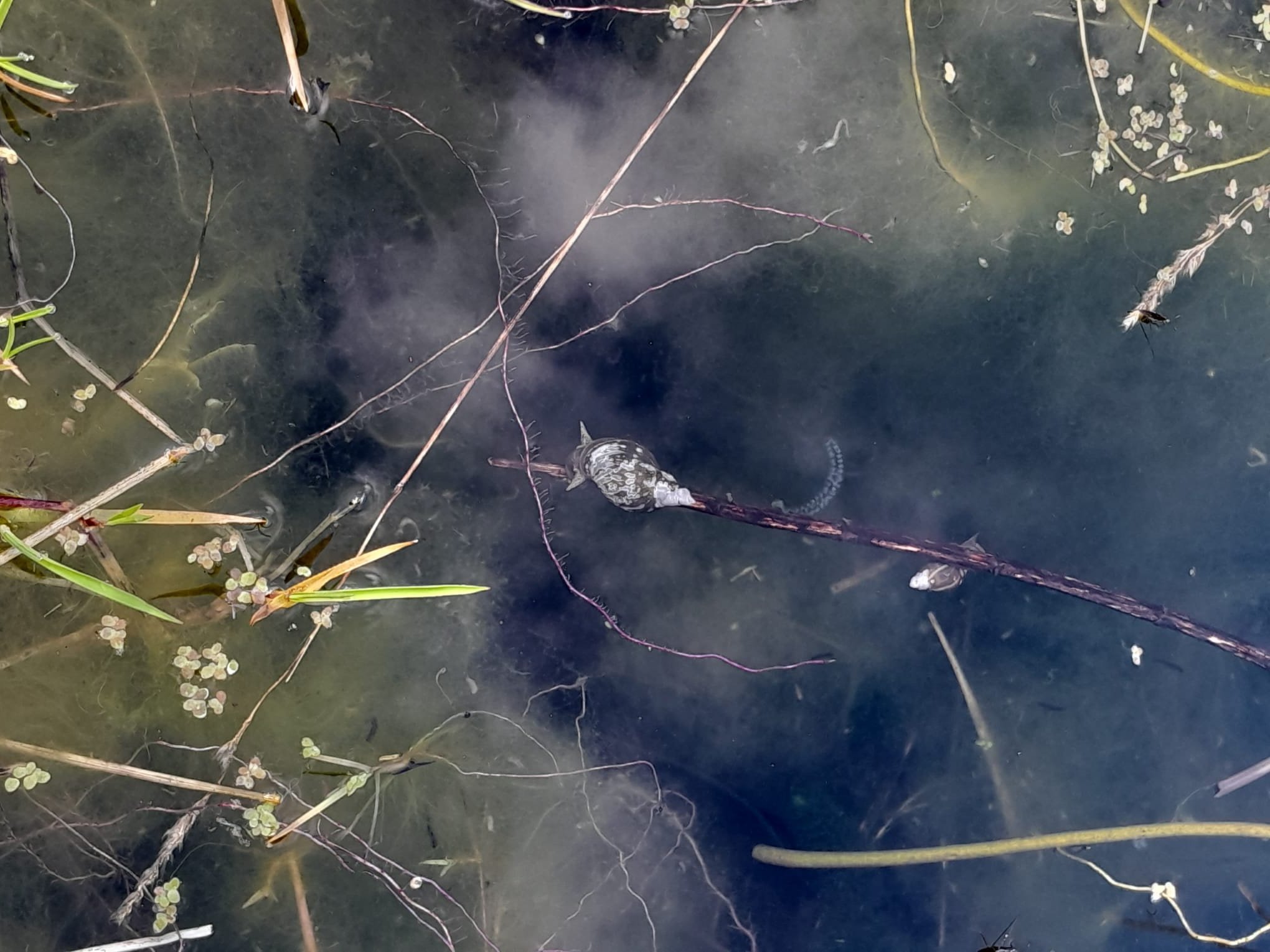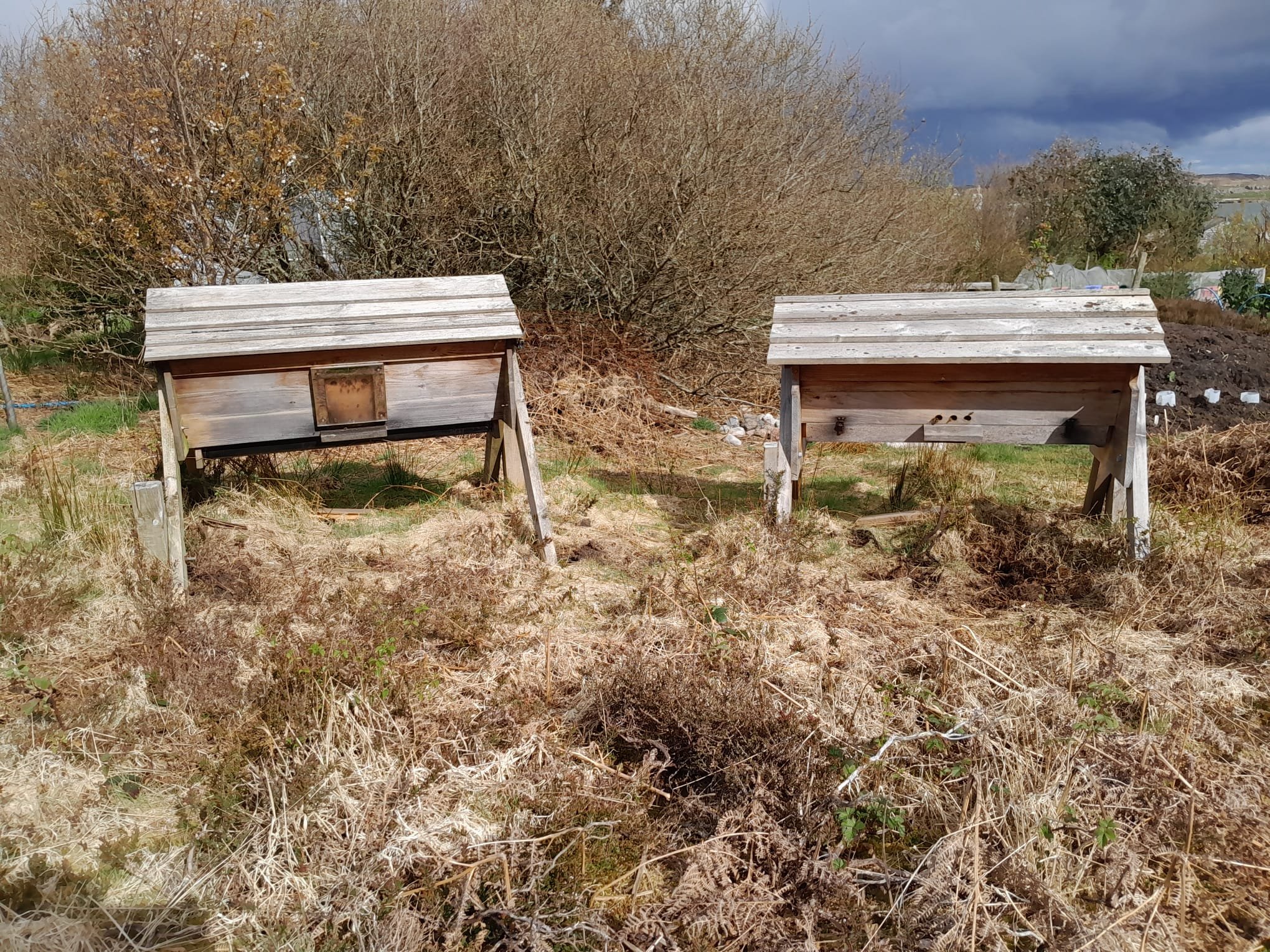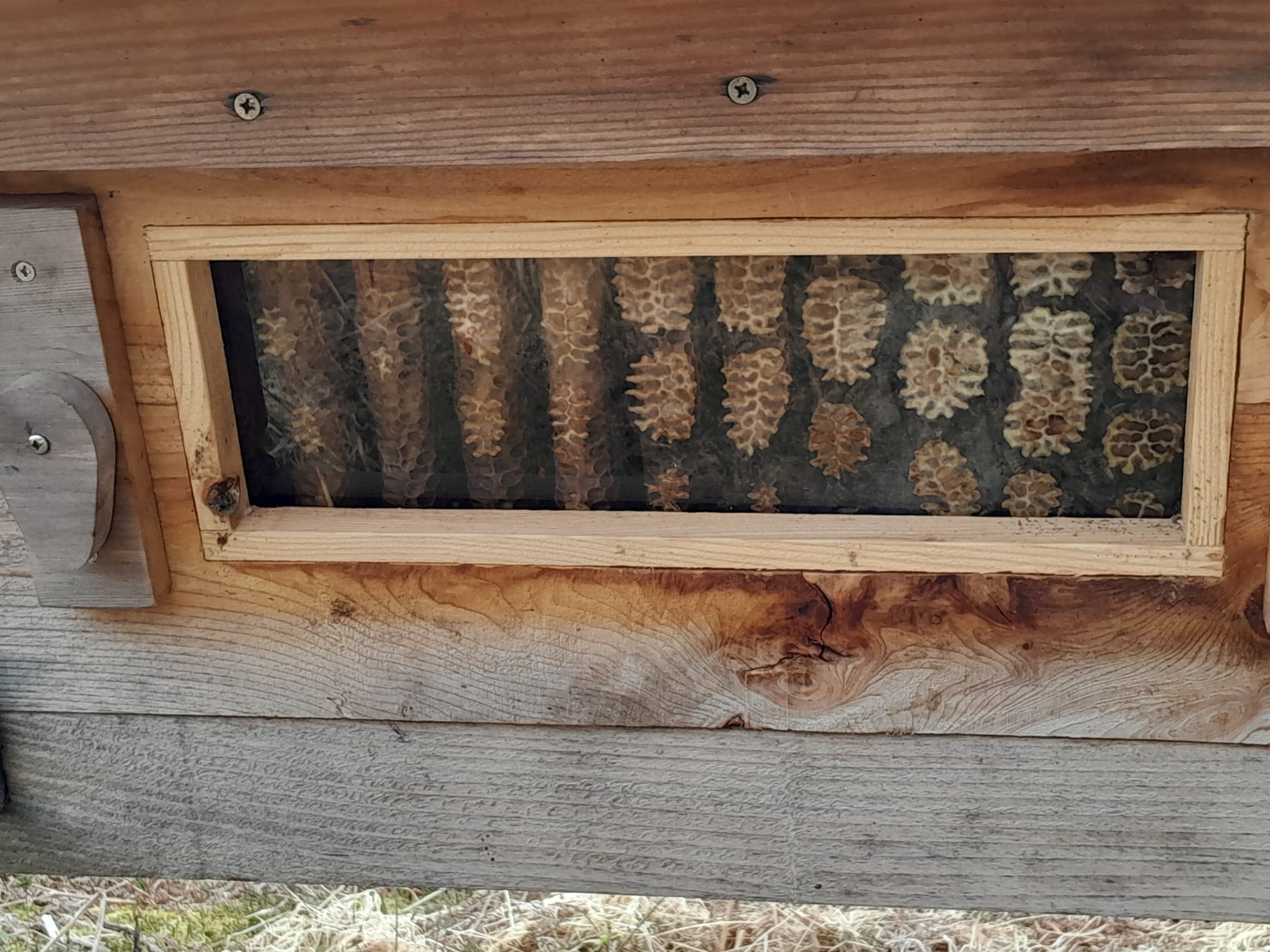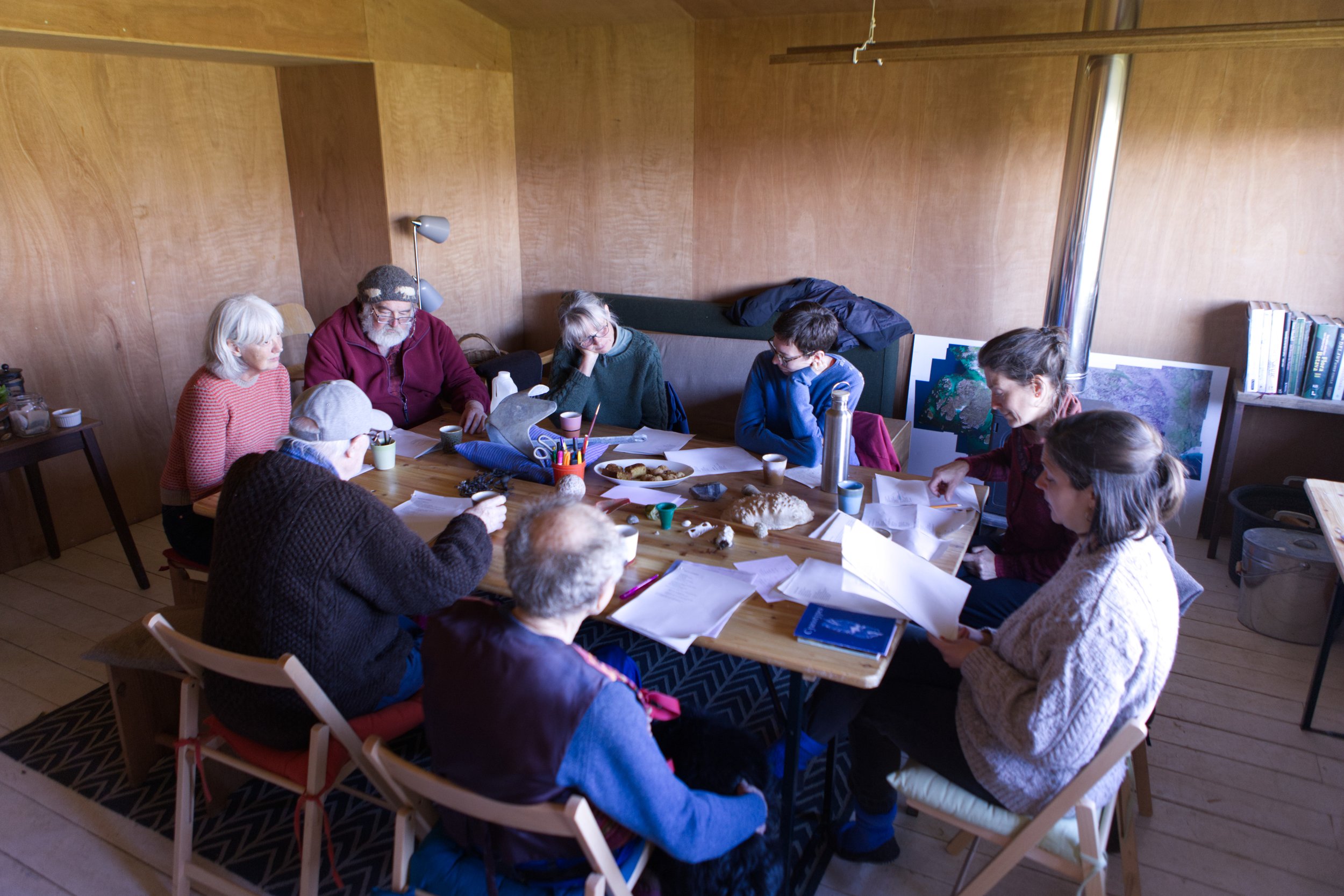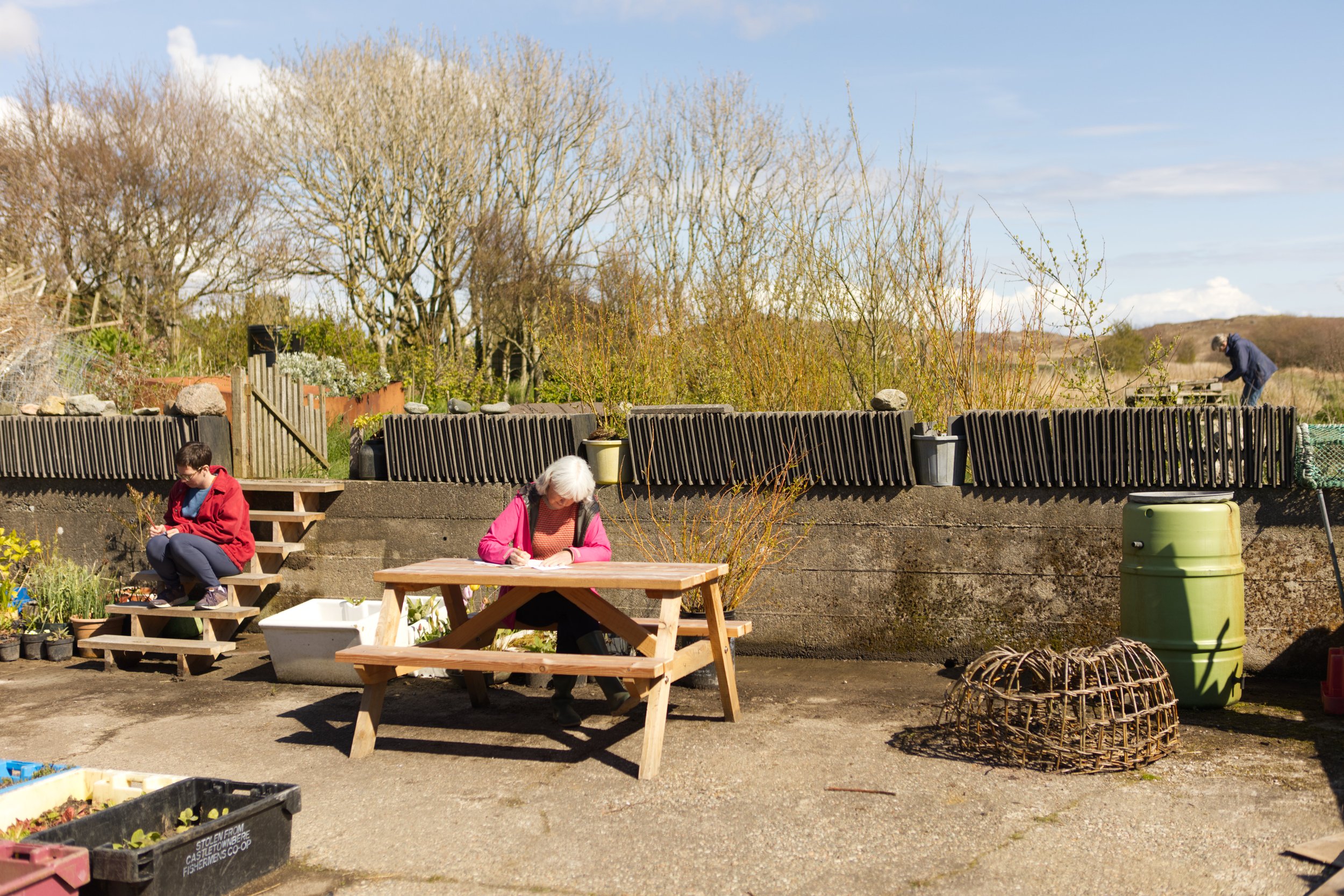Saskia McCracken:
29.04.2024
I spent two weeks at Knockvologan on a writing residency, working on my nonfiction debut about underappreciated wildlife, Awful Creatures: Encounters with Britain’s Unlovable Animals. I was researching the cultural history of toads, whose venom has been used for medicinal, magical and murderous purposes, and wasps, much maligned compared to bees, despite also being pollinators, as well as seed dispersers and crop pest controllers. Wasps are even used as sniffer dogs (to find explosives, drugs, and bodies), and taught us how to make paper 2,000 years ago!
The residency gave me the time, space, and focus to delve into the secret worlds of these creatures without the distractions of my jobs, social media, and the busyness of everyday life. But it gave me more than that, too. Being on the edge of the Tireregan Nature Reserve, tucked between a farm and a croft, and right on the coast, I was surrounded by all kinds of fascinating creatures. I witnessed the slow movement of fresh water molluscs across pond plants, the moon wax, a common lizard bask and blink in the sun, a spider hunt a moth until nothing but a pair of pale wings remained, and translucent globes of oyster thief glistening in the waterline like stranded jellyfish. On either side of me, lambs and calves bucked and called. As I swam, curlew and ringed plover picked along the shore beside me. This helped me to put my work, so species-specific, into a wider context. The main reason we need toads and wasps, after all, is not to do with what they can do for us (medicinal, agricultural, cultural, crime-fighting), it is because they have unique roles in complex, biodiverse ecosystems, both cultivated and wild.
There was an unexpected opportunity for field notes too, when I realised my hosts were beekeepers. I got to spend a morning watching honeybees at their hives, foraging and returning with bright yellow legs, their pollen sacs full. Through a window in the back of the hive, I could see builder bees carrying pale yellow wax and working on the combs, which hung, in all their golden beauty, an intricate network of hexagonal cells ready to be filled with honey. What better way to understand why bees have a better reputation than wasps, than to witness them at work?
Woven between these days of research and observing animals, were forays into the slippery, sticky world of words. Miek is translating some of my poems into Dutch for a magazine issue on green translation. Sitting by rockpools discussing how to translate words and concepts that don’t have an obvious correlative in another language (my mother’s mother tongue, though I barely speak it) was fascinating. It was like looking at the poems through a microscope and finding each word alive as the limpets, seaweeds and periwinkles that lined the pools around us.
While on the residency, I also enjoyed meeting the Ross of Mull Poets and other community members. We did a writing workshop together, in the sun, with poets scattered among the flowers and rusting farmyard machinery looking for things to write about, absorbed. It was such a pleasure to hear their work and get a sense of their in-depth knowledge and passion for Mull’s history and wildlife. Together we watched the first swallows arrive, and with them, new ideas and possibilities, for my writing, for theirs, and for the ecosystems we inhabit.
Saskia McCracken is an author and poet based in Glasgow. She is working on her nonfiction debut, Awful Creatures, about underappreciated animals and why we should care about them, such as midges, rats, wasps, and pigeons. Her publications include a short story collection, Zero Hours (Broken Sleep Books), and poetry pamphlets, Imperative Utopia (-algia press), Cyanotypes (Dancing Girl Press), and Common Name (Osmosis Press).
Website: https://saskiamccracken.wordpress.com/ & X: @SaskiadeRM

